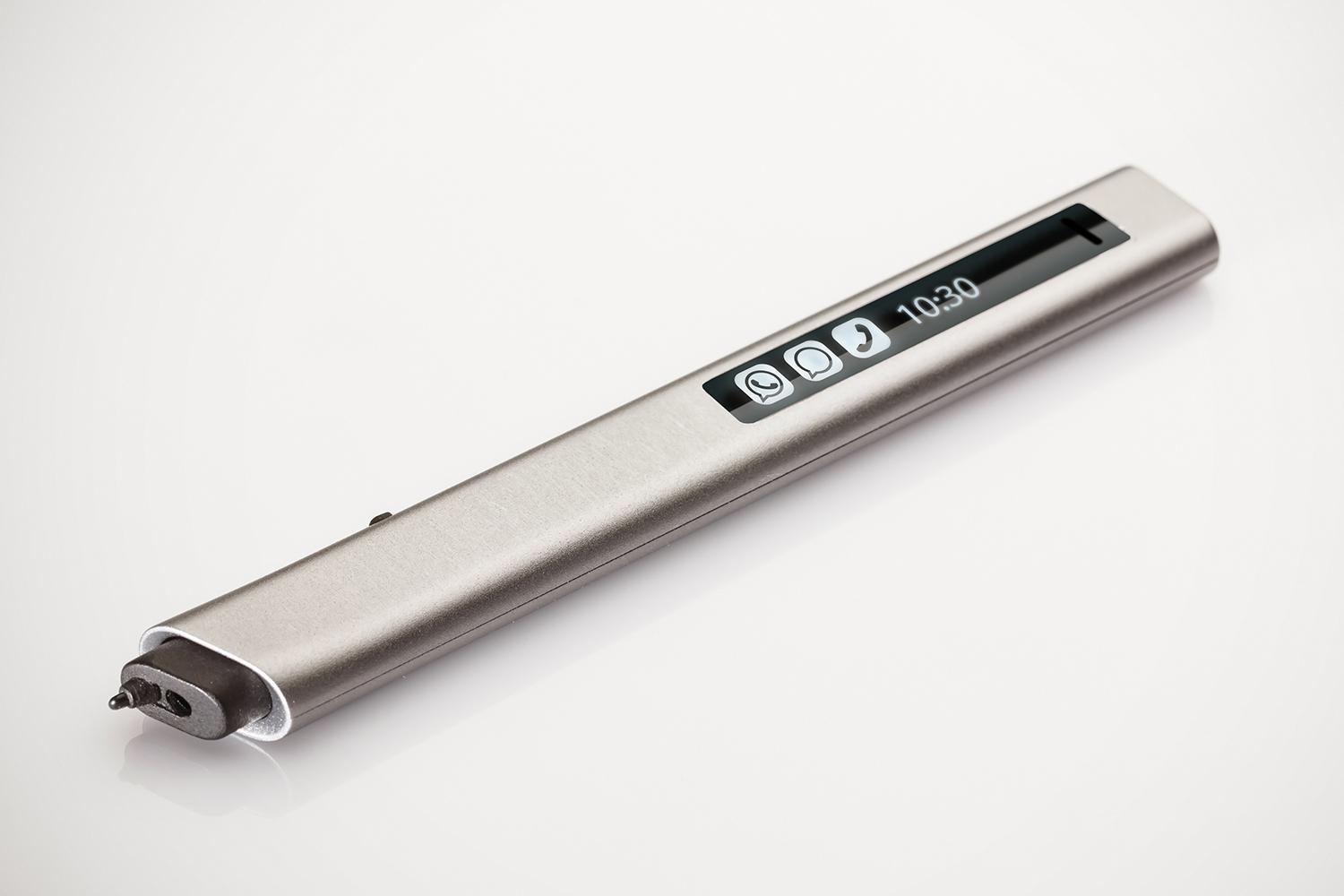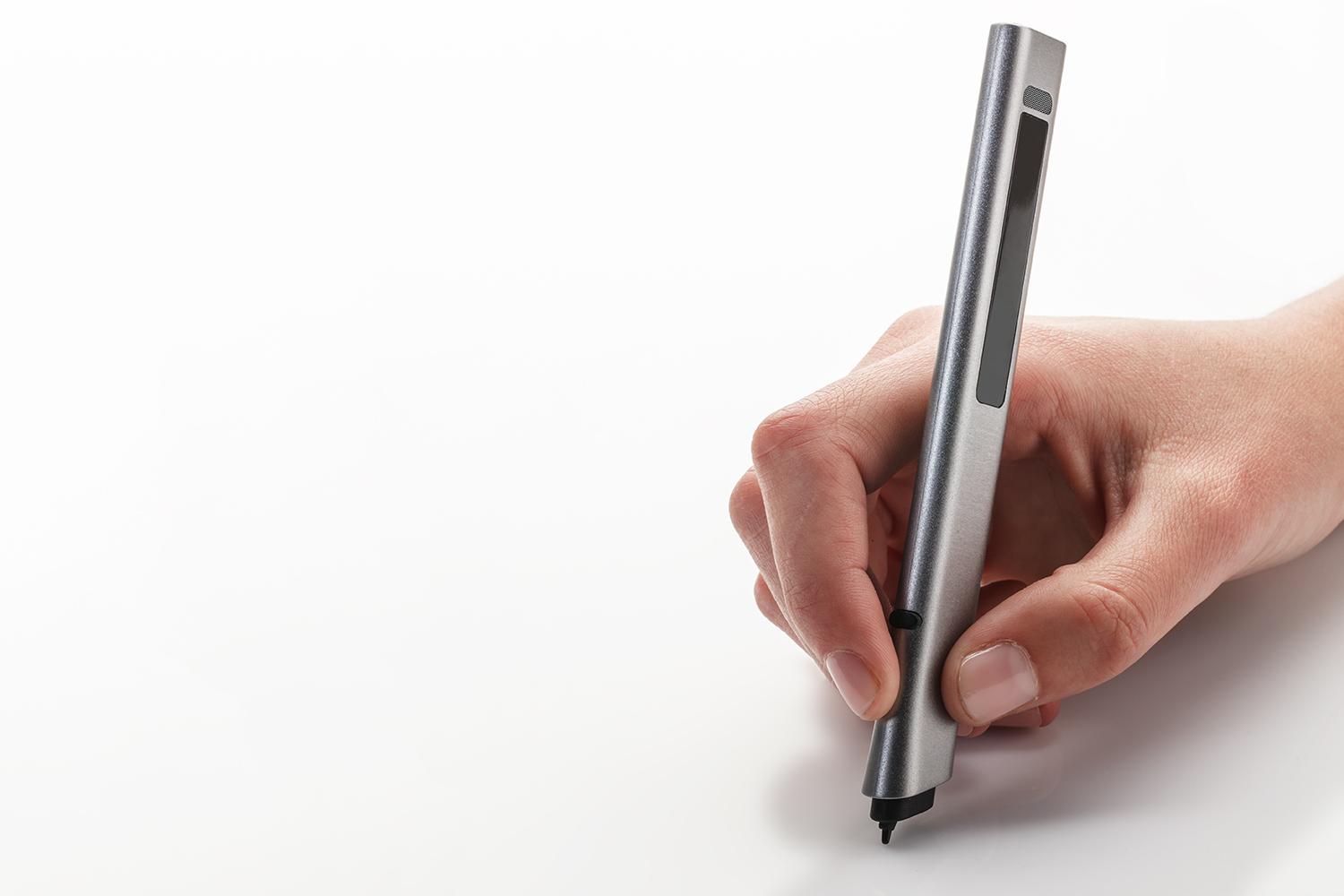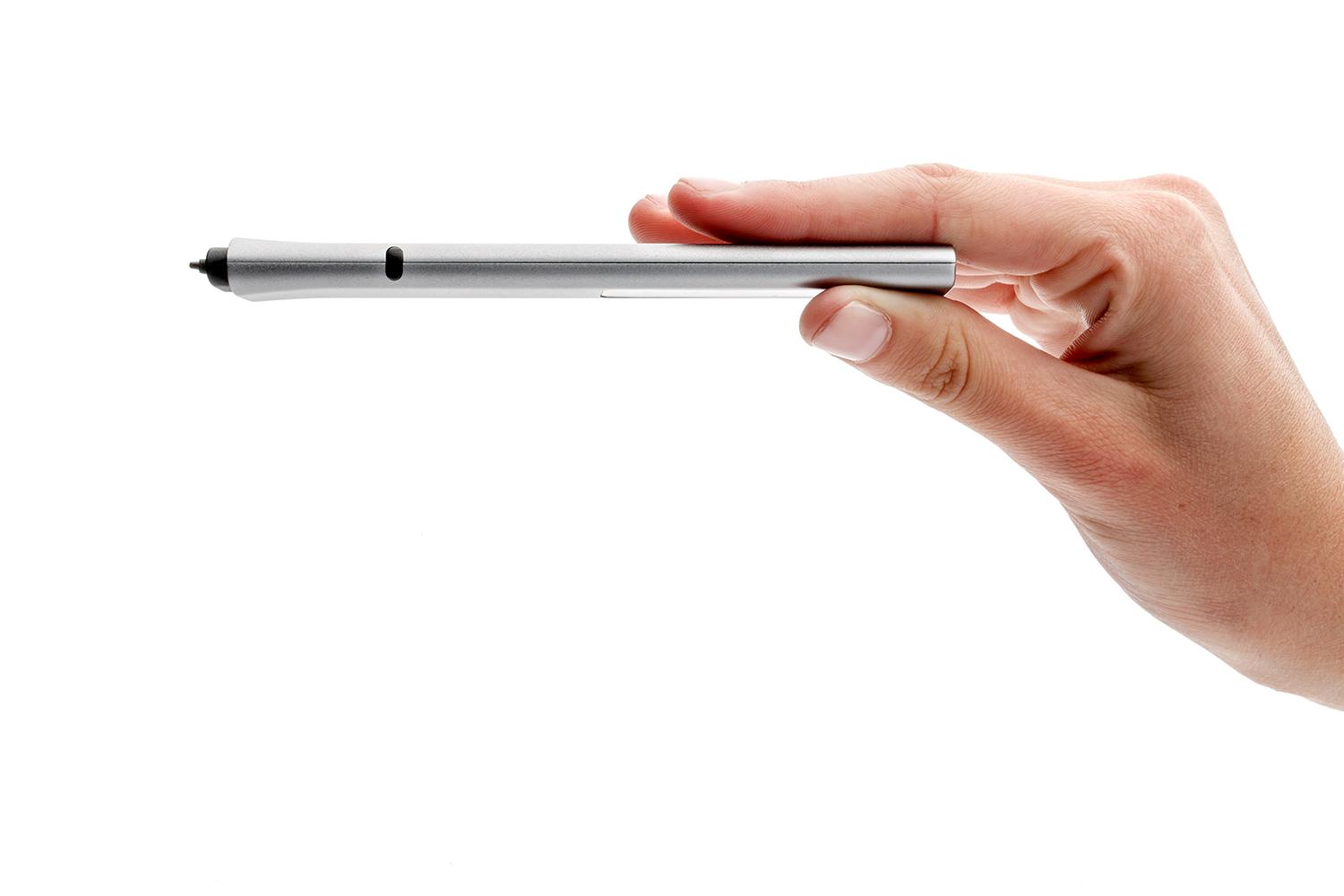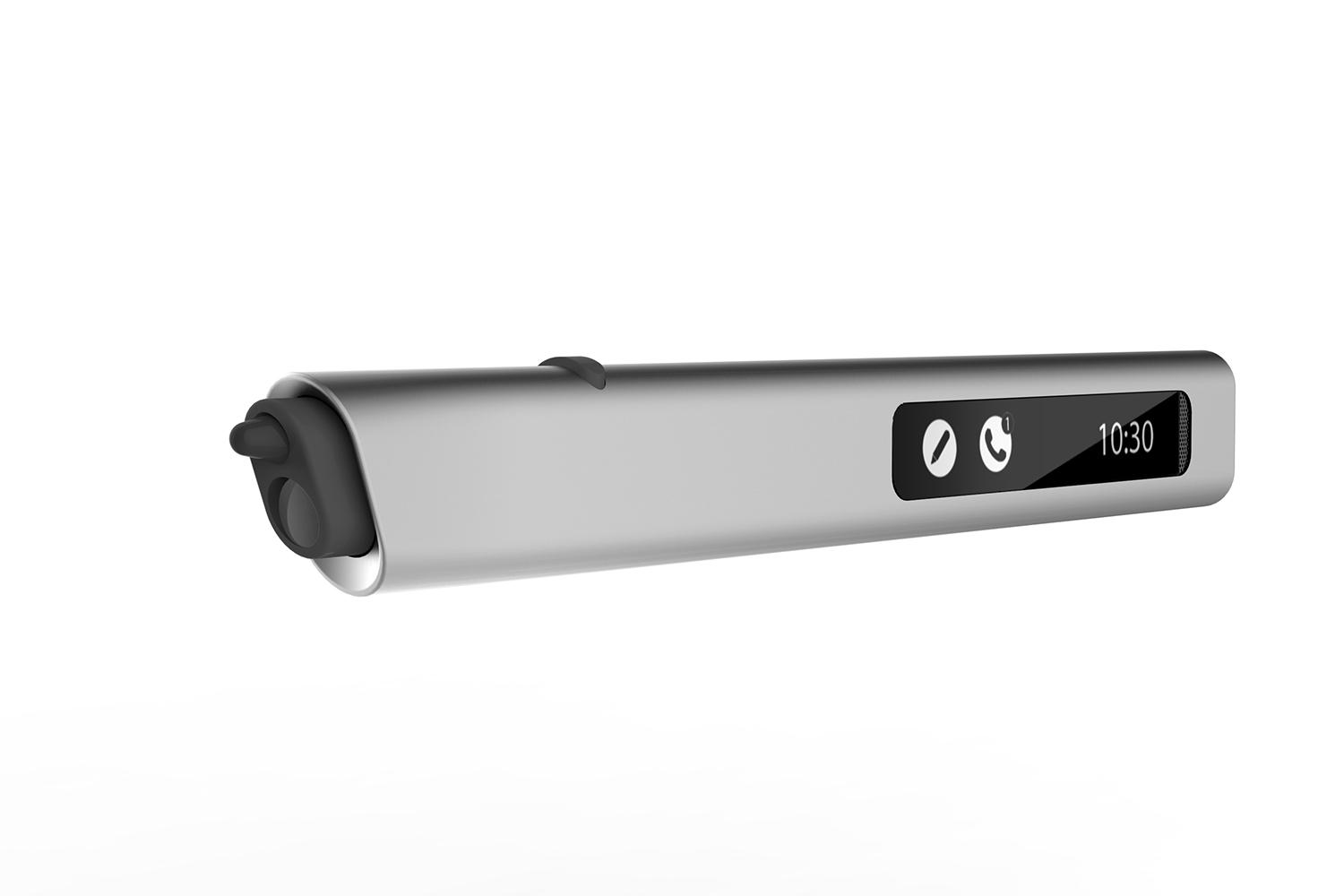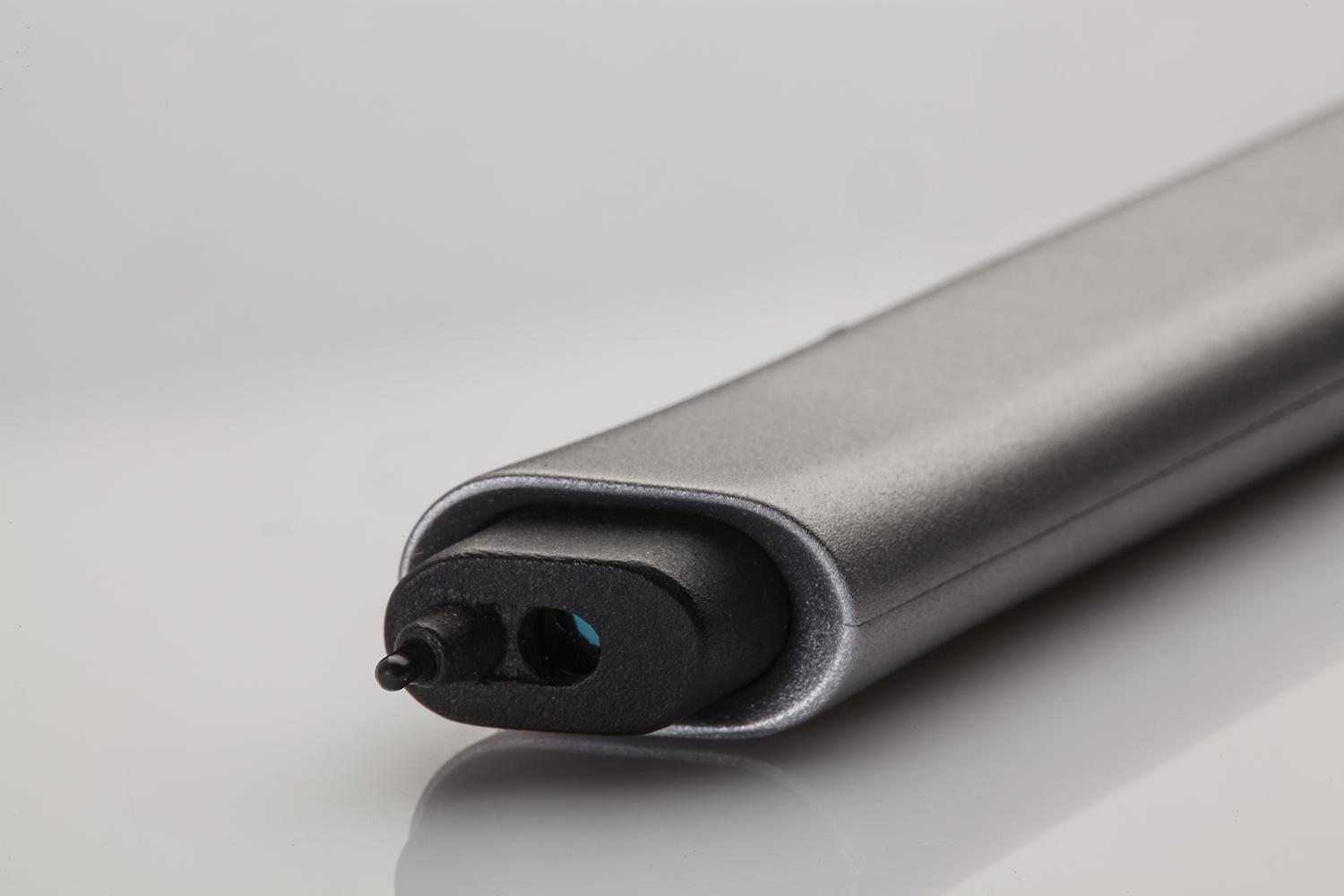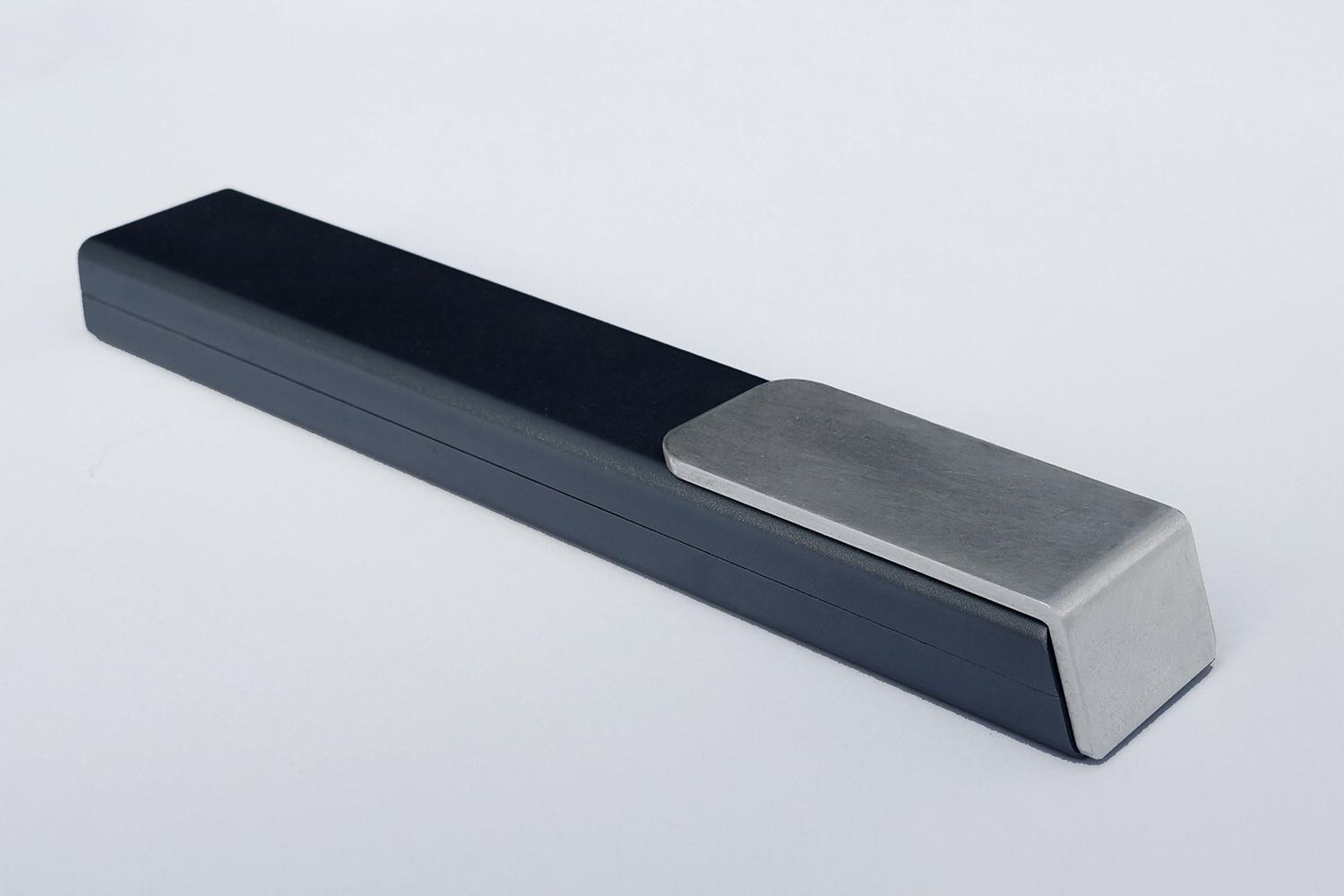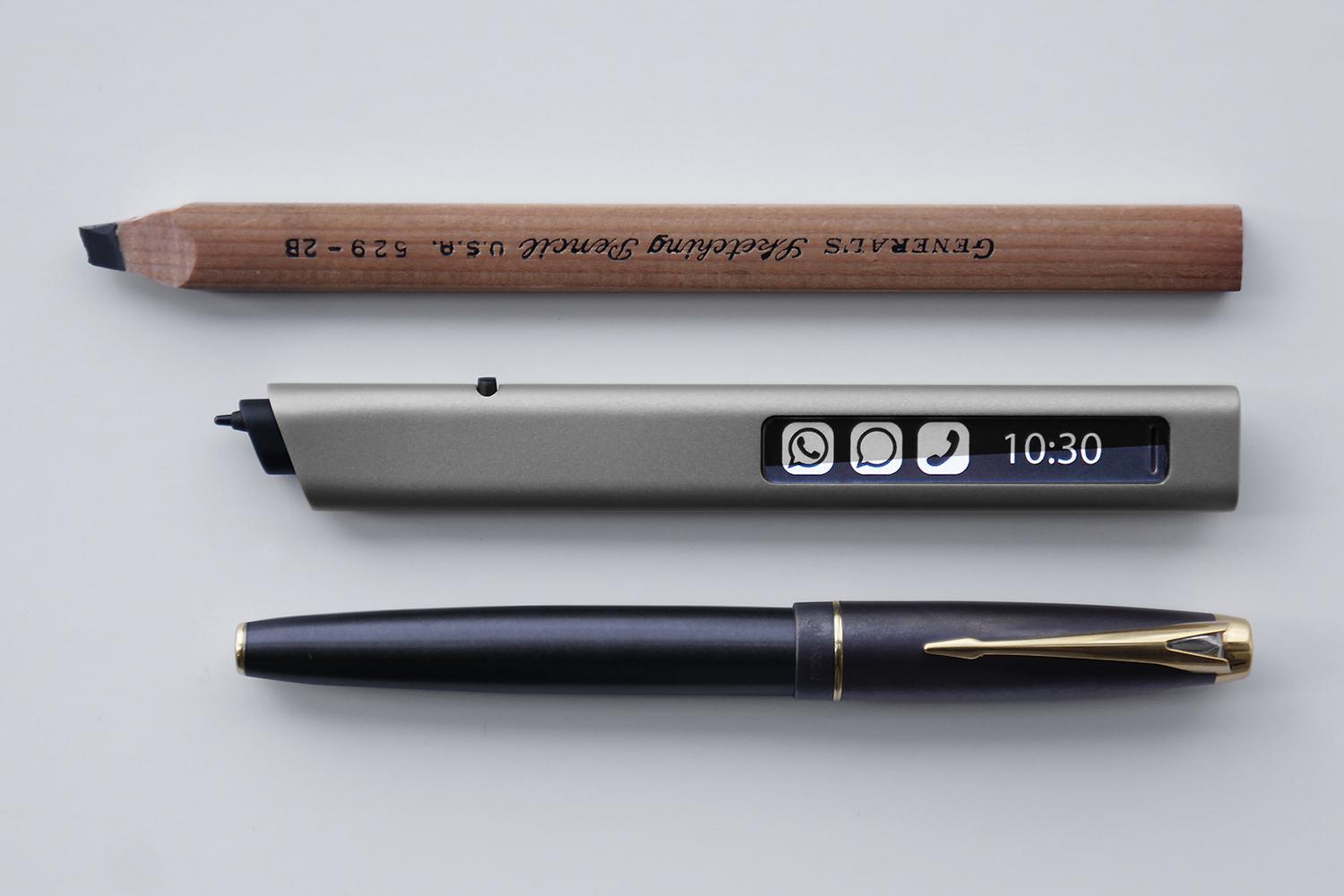The entire world is a tablet screen to Gilad Lederer, co-founder of OTM Technologies and co-creator of a smart pen called Phree. His smart pen writes on any surface and automatically sends pen stroke data to any app on his smartphone.
Lederer isn’t using magic to do this; he’s using a 3D laser interferometer to track motion on any surface and capture it in high definition with a special optical sensor. We saw it in action over Skype, and were amazed by its accuracy and complete lack of latency.
3D optics track pen strokes in real time
Lederer and his partners Dr. Opher Kinrot and Uri Kinrot have been working on Phree for over a decade in Tel Aviv, Israel. All three have degrees in Physics and Math, and have worked in research and development for technology for decades. The patented technology that powers their innovative smart pen is called Optical Translation Measurement (OTM), and it allows the pen to capture handwriting on any surface that it can see, and transmit it to any Bluetooth-enabled device.
A compact 3D laser interferometer sits in the tip of the Phree pen and tracks the relative motion of any visible surface by measuring what OTM calls the “interference signal” between the laser beam that hits the surface and the reflections from it. The laser in the sensor is the same kind of laser that’s used in optical mice.
OTM developed a series of signal-processing algorithms that translate the data collected by the pen’s sensors into X-Y-Z motion data. The data is three dimensional, so Phree understands the motion of the writer’s hand the same way that the human eye does. Phree tracks both the strokes made on the surface and the space between strokes, as your hand moves, so that there’s almost no latency and the strokes are accurate. Phree is also pressure sensitive, so it knows when you’re applying pressure to make a heavy, dark stroke.
Although the Phree doesn’t have ink, you can see what you’re drawing or writing in real time on your phone, tablet, or PC screen. The high 2,000dpi resolution of the sensor also ensures that no stroke is missed — no matter how small. Artists and illustrators have used Phree to draw detailed images on table tops, which are then mirrored in real time on the digital screen of their choice via Bluetooth.
Phree could be an invaluable tool for artists who don’t necessarily want to carry around a sketchbook at all times, and could easily replace the standard notebook for students. Digital note-taking and drawing are becoming more popular, but styli are limited to one surface: glass screens. Phree isn’t bound by any one material, and can truly be used on the go. It’s relatively small, considering, measuring just 142 x 18 x 8.5mm and weighing 30 grams. The battery lasts about a week, depending on use, and it charges in an hour.
Cross-platform support
Phree works with Android, iOS, Windows, OSX, and Linux. It supports most third-party apps on Android, OSX, and Windows, though support on iOS is somewhat limited. iOS users can only take quick notes, use Phree as a headset, and display notifications on the device because there is no support for a visible cursor in the operating system. However, with Android, you can use Phree with almost any app.
Lederer demoed Phree for us with OneNote, a math equation solving app, Sketchbook Pro, and a few others. Phree worked seamlessly with all these apps, and we saw each pen stroke mirrored on the screen immediately. The speed was impressive and the lack of latency was better than many styli we’ve seen in action. Lederer wrote on a table and his hand, but other demo videos show Phree writing on couches, dashboards, and other surfaces with ease. Lederer says as long as the sensor can see the surface, Phree will work. As such, glass and other transparent surfaces don’t play nicely with the pen.
Fund it on Kickstarter
The technology is proven and Phree is more than a dream: It’s a carefully engineered product that’s ready for manufacturing. OTM Technologies put Phree up as a Kickstarter campaign to help it start production, and the company already raised it’s $100,000 goal nine times over. It’s just shy of $1 million with three days to go.
Although Phree’s sold out of the cheap early bird specials, it still has some left for backers who are willing to pay $168. Phree is available in Black, Graphite, Silver, and Gold, and should ship in March 2016, if all goes according to plan. If you’re interested and want to see Phree hit that $1 million mark, you can check out the campaign and grab one here.
